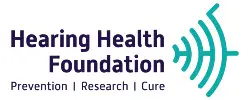Introduction
Sensorineural hearing loss, a prevalent auditory impairment, significantly impacts millions worldwide. This comprehensive article explores the evolution of our understanding and treatment of this condition, offering insights and hope for those affected.
Historical Perspective on Sensorineural Hearing Loss
Sensorineural hearing loss, originating from inner ear or auditory nerve damage, has been a recognized health concern for ages. Ancient Egyptian medical texts first documented symptoms similar to modern descriptions of this condition. Over centuries, our comprehension of sensorineural hearing loss has advanced, leading to more refined definitions and a deeper understanding.
In the 19th and early 20th centuries, the emerging field of Audiology began to unravel the complexities of sensorineural hearing loss. Anatomical studies of the human ear and experiments with early hearing devices shed light on the inner ear and auditory nerve’s roles in sound processing. This period marked a significant advancement in our understanding, laying the groundwork for future developments in diagnosis and treatment.
The Evolution of Sensorineural Hearing Loss Research
The research into sensorineural hearing
loss has undergone a remarkable transformation over the past century. The advent of modern medical technologies has allowed for a deeper exploration into the biology of the human auditory system. One of the pivotal moments in this journey was the discovery of the cochlea’s role in the inner ear’s functioning, which significantly advanced our understanding of the mechanics of sensorineural hearing loss.
In recent decades, the scope of research has broadened to encompass genetic factors. It is now understood that certain genetic mutations can predispose individuals to sensorineural hearing loss. This revelation has opened new avenues in research, particularly in the fields of DNA sequencing and genetic engineering. These advancements hold the promise of groundbreaking developments in our understanding and treatment of sensorineural hearing loss, potentially leading to more personalized and effective therapies.
Advancements in Hearing Aid Technology
The development of hearing aids has been a cornerstone in the management of sensorineural hearing loss. From the early mechanical devices to the sophisticated digital aids of today, hearing aids have undergone a significant evolution. Modern hearing aids are equipped with advanced features like noise reduction, directional microphones, and wireless connectivity, offering users a more natural and clearer hearing experience.
These technological advancements have not only improved the sound quality but also the usability and comfort of hearing aids. Features like rechargeable batteries, discreet designs, and smartphone compatibility have made hearing aids more user-friendly and less stigmatizing. As technology continues to advance, we can expect even more innovative solutions that will further enhance the quality of life for individuals with sensorineural hearing loss.
The Future of Sensorineural Hearing Loss Treatment
The future of sensorineural hearing loss treatment is bright, with several promising developments on the horizon. Researchers are exploring the potential of gene therapy to correct the genetic mutations that cause hearing loss. This approach could offer a permanent solution for some forms of sensorineural hearing loss.
Regenerative medicine is another exciting area of research. Scientists are investigating ways to regenerate damaged hair cells in the inner ear, which are responsible for converting sound vibrations into electrical signals. If successful, this could restore natural hearing in individuals with sensorineural hearing loss.
Additionally, advancements in cochlear implant technology continue to improve the auditory experience for users. Researchers are working on making these devices more efficient, less invasive, and capable of delivering a richer sound quality. These innovations signify a hopeful future where sensorineural hearing loss can be effectively managed or even cured.
Conclusion
The journey of understanding and treating sensorineural hearing loss has been long and complex, but it is marked by significant progress and hope. From the early days of rudimentary treatments to the modern era of advanced technology and research, we have made great strides in improving the lives of those affected by this condition. As we continue to explore new frontiers in genetics, regenerative medicine, and technology, the future looks promising for even more effective management and potential cures for sensorineural hearing loss.
FAQ Section
Q1: What are the latest advancements in sensorineural hearing loss treatment? A1: Recent advancements include the development of more sophisticated hearing aids with advanced features like wireless connectivity and noise reduction. Research in gene therapy and regenerative medicine is also showing promise in potentially curing certain forms of sensorineural hearing loss.
Q2: Can lifestyle changes impact sensorineural hearing loss? A2: Yes, lifestyle changes such as avoiding exposure to loud noises, using hearing protection, and maintaining overall health can help manage the condition and prevent further hearing loss.
Q3: Are there any new diagnostic methods for sensorineural hearing loss? A3: Advances in diagnostic methods include more precise audiometry tests and imaging techniques, which help in accurately diagnosing the type and severity of hearing loss.
Q4: How effective are cochlear implants in treating sensorineural hearing loss? A4: Cochlear implants are highly effective in treating severe to profound sensorineural hearing loss. They bypass the damaged parts of the ear and directly stimulate the auditory nerve, allowing users to perceive sound.
Q5: Is sensorineural hearing loss reversible? A5: Currently, most forms of sensorineural hearing loss are not reversible. However, treatments like hearing aids and cochlear implants can significantly improve hearing and quality of life.
Q6: What role do genetics play in sensorineural hearing loss? A6: Genetics can play a significant role in sensorineural hearing loss. Certain genetic mutations can predispose individuals to this condition, and understanding these genetic factors is crucial for developing targeted treatments.
Practical Tips
- Protect Your Ears: Always use ear protection in noisy environments to prevent further hearing damage.
- Regular Hearing Tests: Schedule regular hearing evaluations, especially if you notice any changes in your hearing.
- Stay Informed: Keep up with the latest research and advancements in sensorineural hearing loss treatment.
- Embrace Technology: Utilize the advanced features of modern hearing aids for a better hearing experience.
- Seek Professional Advice: Consult with audiologists or ENT specialists for personalized treatment plans.
Myths vs. Facts
Myth 1: Sensorineural hearing loss only affects older adults. Fact: It can affect individuals of all ages, including children.
Myth 2: Hearing aids can cure sensorineural hearing loss. Fact: Hearing aids do not cure hearing loss but help manage it by amplifying sound.
Myth 3: Sensorineural hearing loss is always caused by loud noise exposure. Fact: While noise exposure can cause hearing loss, there are many other causes, including genetics and certain medical conditions.
Share Your Experience
We invite you to share your experiences with sensorineural hearing loss. Your stories can offer valuable insights and support to others facing similar challenges. Please share your journey with us through our submission form.






